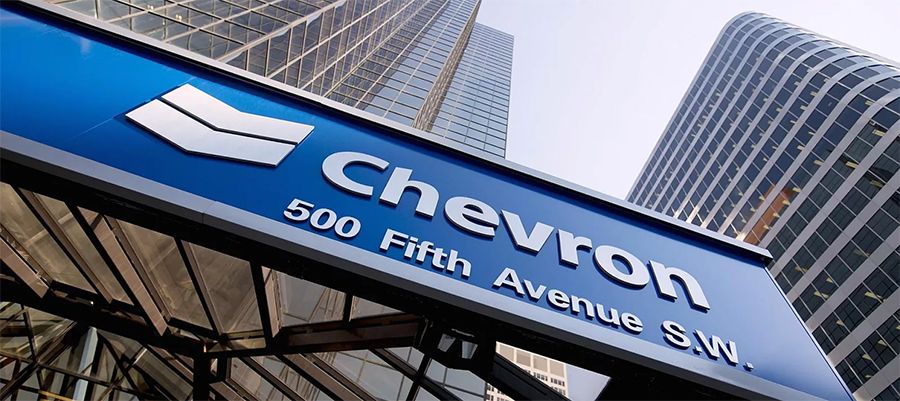
Source: PaxForex Premium Analytics Portal, Fundamental Insight
As a result of the pandemic, there was a collapse in oil and gas demand, many companies were forced to cut costs and production and take on debt to keep body and soul together. This left the industry short of supply in 2021. And as geopolitical tensions increase and demand continues to outpace supply, oil prices are hovering at the $100 a barrel mark.
During the 2020 crisis, Chevron was one of the few oil companies that didn't cut its dividend. What's more, the company raised them - as it has done for more than 35 years in a row. Any oil and gas company can break even in the oil market with a price of $80 (per barrel) or higher. Those companies that can survive recessions are the most attractive long-term prospects for investors. Chevron has this resilience because of its low production costs, which lets it reach breakeven free cash flow even at oil prices below $40 a barrel.
One of Chevron's other strengths is the diversity of business segments that span the entire integrated oil and gas value chain - exploration and production, transportation and storage, refining, and marketing.
While wind and solar may have a brighter long-term future than oil and gas, businesses like Chevron and ExxonMobil, which have been less inclined to get rid of renewables than their European counterparts, are now in an enviable position. Chevron's relatively less appetite for renewable energy now allows it to operate in the oil and gas industry. And the 2020 acquisition of Noble Energy, which went to Chevron at a ridiculously low price given the current level of oil and gas prices, will further bolster that competitive advantage.
Chevron stock was up 11.9 percent last week, according to S&P Global Market Intelligence. Investor enthusiasm was driven by a combination of industry and company-specific news.
Chevron, like other oil and gas companies, is benefiting from rising energy prices. There are some reasons for this, but the most prominent theme right now is that geopolitical uncertainties with supply and demand imbalances are causing the world to worry about the availability of oil and natural gas. Since Chevron's profits and losses are heavily dependent on the prices of these commodities, investors tend to buy the company's stock when energy prices rise. The company's strong financial results in the fourth quarter of 2021 show how much it benefits when oil prices are high, and CEO Mike Wirth called last year "one of the most successful years in our history."
But that's not the only reason investors are optimistic about Chevron. Last Monday, the company announced an agreement to acquire Renewable Energy Group for $3.15 billion. Renewable Energy Group operates refineries that use waste oils to create useful products such as biodiesel. Several notable conclusions can be drawn from this. First off, Chevron is employing its size and financial power to buy its way into the clean energy niche, proving that it can use acquisitions to transform its business quickly. Second, biodiesel is in line with Chevron's growing interest in low-carbon products, so the oil giant is not too far off in its quest to become more environmentally friendly. Both of these factors are positive, and investors will likely reward the company for this move as well.
But that's not all. One day after announcing its acquisition of Renewable Energy Group, Chevron told investors about its long-term plans. It increased its share buyback target, raised its return on invested capital target, and reaffirmed its commitment to clean energy. The company now expects operating cash flow per share to grow 10% a year through 2026, assuming oil costs at least $60 a barrel, well below current oil prices.
The biggest question for Chevron is how it will perform over the next several decades as renewables continue to take a larger share of the energy mix. While it's easy to see its concentrated position in the oil and gas industry as a vulnerability, it's safe to say that much of the developed and developing world will depend on oil and gas for years to come. And given that Chevron is one of the best in the business, it stands a good chance of staying in the long run and serving its customers, even if renewables eventually supplant oil and gas.
Overall, the company is showing that it can acclimate to the times and that the current energy market will be good for its business. Not surprisingly, investors have raised the share price.
As long as the price is above 145.00, follow the recommendations below:
- Time frame: D1
- Recommendation: long position
- Entry point: 158.32
- Take Profit 1: 170.00
- Take Profit 2: 180.00
Alternative scenario:
If the 145.00 level is broken-down, follow the recommendations below:
- Time frame: D1
- Recommendation: short position
- Entry point: 145.00
- Take Profit 1: 140.00
- Take Profit 2: 130.00













